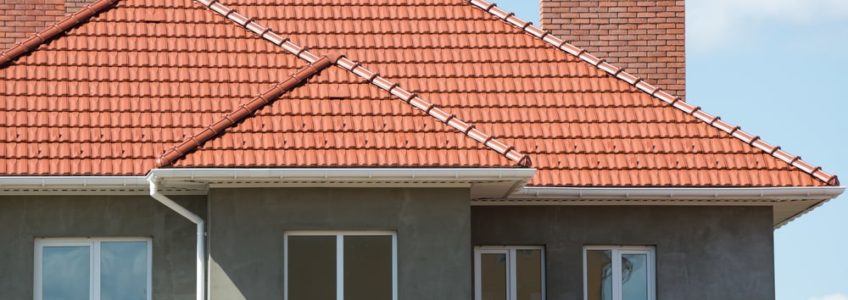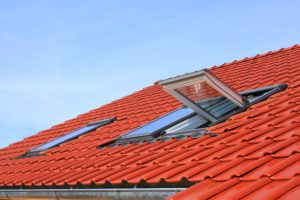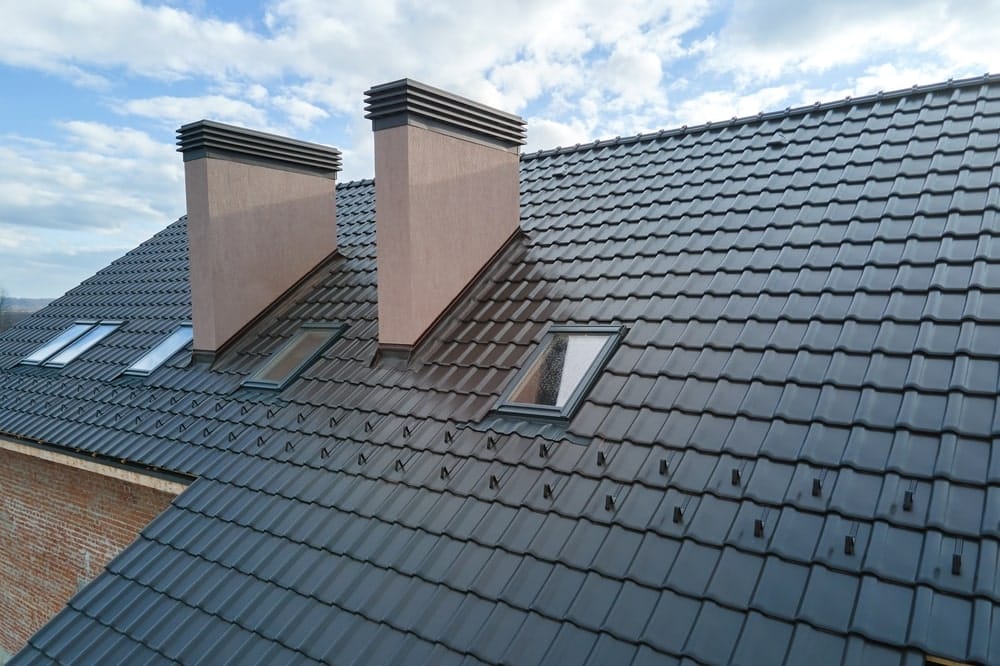
If you’re asking yourself, “will a new roof save energy?” The answer is that it certainly can. One key reason you should go ahead with a roof replacement is the energy savings you can achieve using newer materials installed by experts. Roofs today are much different than roofs even 20 years ago, which has translated into higher energy efficiency.
So, if you’re wondering if a new roof helps energy efficiency, here are a few ways your investment can help you instantly reduce your energy bill.
How Will a New Roof Save Energy?
The newer your roof and the more experienced the team that is installing your roof is, the more energy efficient it will be, which makes installing a new roof by a trusted team a great way to save on energy costs. Here are some of the reasons new roof energy savings are possible:
#1. New Insulation

Chances are the insulation in your roof (if there is any) is old and newer technology works better at keeping warm and cold in or out. Recognizing extreme temperatures in your home despite constantly running the heating or central air conditioning could be a sign that it’s time to replace your roof. Proper roof insulation can be a major energy-saving resource as you have to spend less money heating or cooling to keep the rest of your home comfortable.
Better energy efficiency saves you money and energy by not having to heat or cool as often and also reduces wear and tear on your HVAC system. That prolongs its life and saves you money by not having to replace the HVAC components as often.
You can replace your insulation whenever possible, even if you do not replace your roof. Doing it during a roof replacement, however, addresses two needs at the same time.
Additionally, roofing materials are made better than ever, and part of that provides better insulation. That insulation helps keep warm air out in the summer and cold air out during the winter by creating a seal. It reduces the amount of moisture that can build in your attic by keeping humidity outside, and it protects your shingles from mold and rot, prolonging their life.
#2. Proper Ventilation
Ventilation and your roof work hand in hand, even if most people do not realize it. Common mistakes when installing a new roof can result in a loss of energy savings. Part of a roof installation is strategic venting to allow the roof to breathe. That lets hot air out in the summer, and it helps avoid ice dams during the winter.
When air cannot escape because of ventilation, your HVAC has to work much harder to cool the entire home because hot air rises, and if it cannot escape, it builds up. That makes it more difficult to cool hotter air on upper floors, so your HVAC works hard to address something that can be addressed just by adding proper ventilation.
When properly ventilated, your HVAC does not have to work as hard or as often, which cuts down on electricity costs, saving you money and saving energy at the same time. It also helps preserve the materials used in your roof, prolonging their lives by preventing underlayment from drying out, which saves costs by reducing costs for repair and replacement.
#3. Durability
Roofing has always been tough. It must withstand a constant onslaught of weather and temperature extremes to result in new roof energy savings.
While the interior of your house might be cool in the summer, your roof might be exceeding 150 degrees Fahrenheit. During the summer, that can happen day after day. In the winter, when you are warm, your roof endures ice, snow, and freezing temperatures. It also puts up with temperature fluctuations that can go from very hot to very cold in just a few hours during the fall and spring.
Does a new roof help energy efficiency, or is my durable old roof enough? While just about all roofing made from the 1980s on is extremely durable, roofing manufactured over the last 20 generally uses newer technology, and its strength is impressive. It simply puts up with weather extremes better than previous roofing materials. Additionally, a new roof can withstand the extremes of storms, resulting in less costs for storm damage repairs.
More durable materials mean your roof lasts longer, saving money over time. It also means your roof maintains its integrity in terms of new roof energy savings, saving energy, and energy costs. Many roofs today are built to endure heat from the sun better, resist high winds, and hold up better with ice and snow. They simply are built better.
#4. Solar Reflection
If you’re wondering how a new roof saves energy compared to older ones, one of the major updates to materials is solar reflection. Most roofing materials today reflect the sun’s rays rather than absorb them. Estimates are that high solar reflection on a roof can reduce temperatures by as much as 30 percent. Lowering surface temperature prolongs your shingles’ life and reduces the house’s overall heat.
Less heat to cool means running your HVAC less, the system lasting longer, and it being easier to cool your home in the winter.
One way to reduce solar absorption is by using colored shingles. Depending on your location, you can opt for some shingles and roofing materials that never absorb the type of heat that standard black shingles do.
#5. Modern Shingles Are Made Better
As with increased durability and lifespan, today’s shingles also have technology advancements that add to new roof energy savings. Most shingles come with an Energy Star Rating that indicates the materials used are as energy efficient as possible. Energy efficient materials mean you save money via longevity as well as because they have the Energy Star Rating.
Another benefit of roofing technology is that shingles’ wind rating has increased dramatically. Newer shingles can prevent wind damage more easily. In some cases, it can protect a roof up to winds exceeding 130 MPH. Not only will you save on repair and replacement costs, but these shingles also help warm and cool your home.
A roof that lets in the wind siphons off hot and cool air, depending on the season. That means your home is easier to heat and cool even during storms. By helping contain both better when appropriate, your HVAC does not work as hard. Just another reason why it’s a no brainer when asking yourself “does a new roof help energy efficiency?”
New Roof Energy Savings

The bottom line to will a new roof save energy is that it can. With a trusted team and the advancements of modern materials, a new roof helps energy efficiency and increases durability as it adapts to current climates and temperatures.
If you notice that your energy costs are through the roof, quite literally, contact A to Z Construction today for a consultation.









